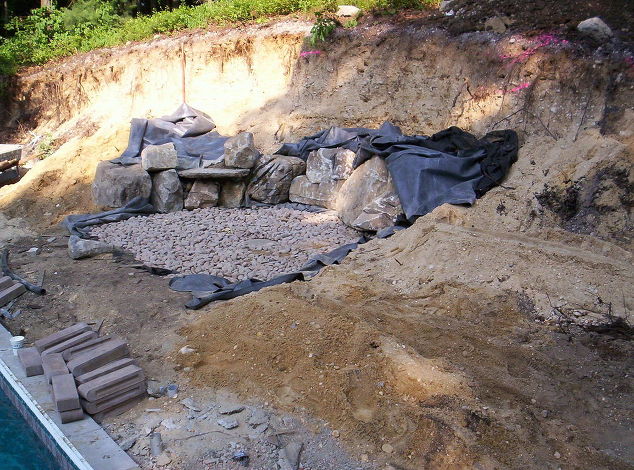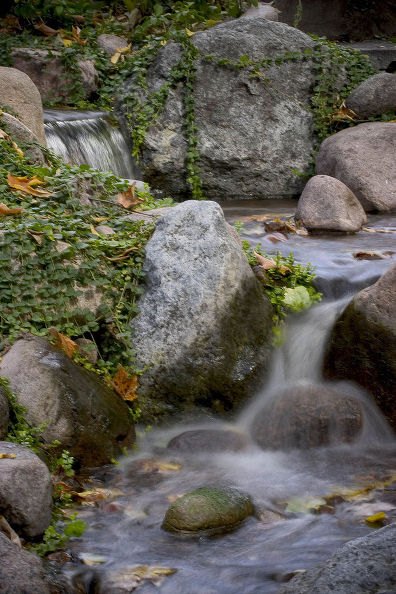Upgrading Pool and Backyard: New Landscaped Slope Replaces Old Retaining Wall
As part of an overall backyard upgrade, Deck and patio was asked to replace a deteriorating two-tiered retaining wall that had become an unsightly focal point of the clients’ pool and patio area. In addition, loud noises that came from behind the wall were a problem. Other elements that needed refurbishing were the pool’s bowing stack concrete wall, and an aging patio.
To renovate the pool, we reinforced its wall with steel rebar and filled blocks with concrete; we also reshaped its design into an elegant geometric form. In addition, Deck and Patio surrounded the pool on three sides with a durable and handsome Cambridge patio.
Transforming the dual four-foot retaining walls called for a major transformation: removing and replacing the walls, and filling the space with naturalized boulders before colorful plantings, and a seven-foot high water feature could be added. Deck and Patio’s project manager/designer for the job was Bill Renter, who is an avid outdoor enthusiast.
“I spend as much time as I can walking the hillsides of New York’s Catskills and studying the landscape,” says Renter. “This has increased my expertise in how rock placement affects the flow of streams and waterfalls.”
Indeed, over the years, Renter has received a multitude of awards for choosing the perfect rocks, and artfully installing them to great effect and function.
Seven-Foot High Waterfall
Replaces Old Retaining Wall
“Bill wanted our clients to experience what he does when he explores nature,” adds Dave Stockwell, owner of Deck and Patio.
“Not only did he create a beautiful focal point behind the pool, the dramatic waterfall drops into a pond-less system by Aquascape that filters and collects the water underground to recirculate it. Not having a pond capturing the falling water allowed Bill to add a stepping stone path that bring strollers right up to the fall, as if they were on a nature walk in the mountains.”
Backyard Upgrade Before and After:
Plantings are a key part of creating any natural retaining walls. Along with boulders and other rocks, their root systems add to the overall strength of the support system. Deck and Patio always chooses plants for their color, bloom periods and how they grow — ensuring color all through the seasons that keep their harmony year after year.
Here’s one additional “before” and “after” grouping that highlights the process of replacing a retaining wall.
































